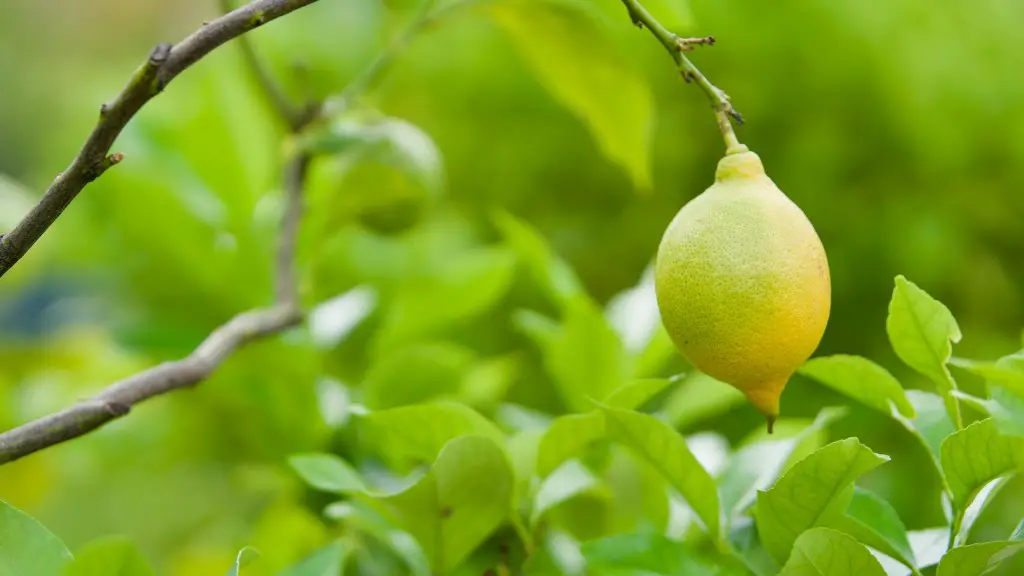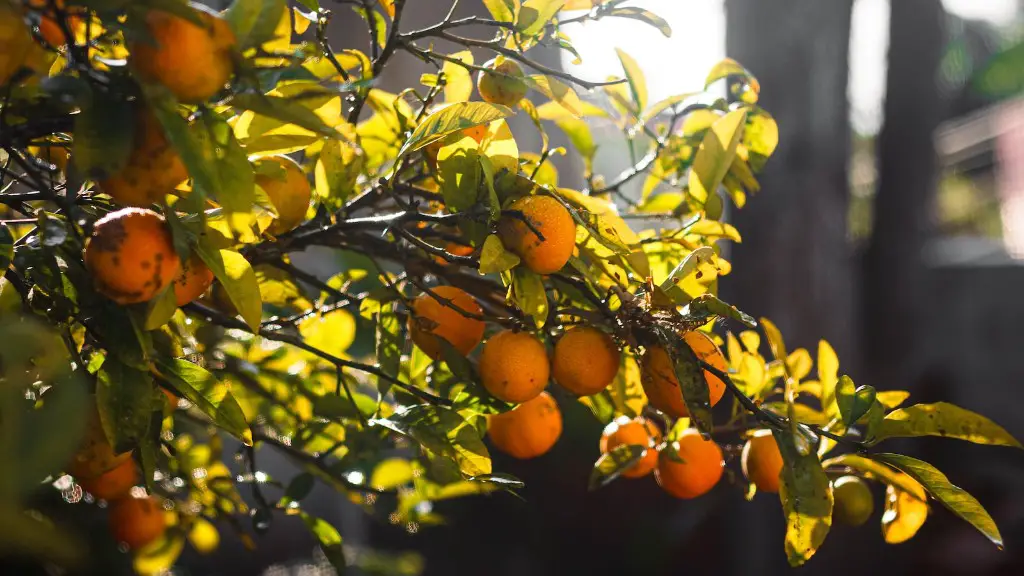Getting a lemon tree can be a great way to add some citrus flavor to your cooking or spruce up your garden. It’s a surprisingly simple process and can be done with a few simple steps. Here’s how to get a lemon tree.
Firstly, you’ll need to pick a lemon variety that works for you. Lemons come in many different sizes and colors, and the taste of each one can vary quite a bit – so pick the one that looks and tastes best to you. Once you’ve decided, you’ll need to find where to purchase the tree.
If you’re purchasing a mature tree, you can consider local nurseries or home improvement stores. Check online to see if there are any nearby, then go take a look at the selection. If you want a younger tree, you can order one online. While they may take longer to bring you the fruit, they’ll get you the exact variety you’re looking for and be less expensive.
Another option is to start your own tree from seed. Make sure it’s a true lemon seed, which you’ll be able to find online. Plant it in a pot and be patient – it might take several years before the tree is mature enough to bear fruit. It’s also important to note that the tree grown from seed may not produce the same type of lemon you started with.
Once you’ve chosen the tree, you’ll need to pick a good spot for it. Lemons thrive in daylight and warmth, so pick a sunny spot and make sure it gets around 8 hours of direct sunlight per day. It’s also important to pick a spot that isn’t too close to other trees or buildings, as these can reduce the light the tree gets. Make sure the soil is well-draining and there isn’t too much wind.
Last but not least, you’ll need to start taking care of it. Water your tree regularly and make sure it gets the nutrients it needs by adding fertilizer or compost. Prune away any dead or diseased branches and remove any unwanted suckers. With a little love and care, you’ll soon be harvesting plenty of lemons.
Grafting
Grafting is a great way to get a lemon tree quickly and easily, since it results in a productive tree starting from the day it’s planted. All you need to do is take a stem from a preferred lemon tree and attach it to an existing lemon rootstock. This is usually done with a splice and can be done at home or bought pre-grafted from a nursery.
However, keep in mind that the quality of the lemons you get may not be as high as those form a tree that’s grown from seed or cuttings. The amount of fruit production also might not be as high because the tree may not be as healthy as one that you grew yourself.
So, if you’re looking for quick and easy results, grafting may be the way to go. But if you’re looking for the best quality lemon tree, consider planting your own from seed or cuttings.
Cuttings
Taking a cutting from a mature lemon tree is another option. Start by cutting a branch or twig from the tree that has a few leaves on it. Dip the end of the cutting in rooting hormone to promote sprouting and then plant it in moist, fertile soil. You may need to keep the soil regularly moistened for several weeks for the cutting to develop roots. Once the roots have developed, the cutting is considered a tree and can be transplanted.
The advantage of taking a cutting is that it’s very cost-effective. It’s also a good way to get a clone of a tree you already have and like the produce of, since the tree you take the cutting from will be genetically identical to the one you end up with.
Cuttings can take a bit of time and patience to work well, so if you need to get a lemon tree quickly and don’t want to deal with the wait, this may not be the best choice for you.
Soil Considerations
When you’re growing a lemon tree, it’s important to make sure the soil is in good condition. Lemons prefer soil that is light and well-draining, so consider adding a mix of soil, sand, and compost or other organic matter to the soil. Also, it’s important to keep the pH levels balanced so you don’t end up with a lemon tree that produces bitter or sour fruit. Test the soil occasionally and make sure to add fertilizer if needed.
This is especially important if you’re growing your lemon tree in a pot. If the soil isn’t well-draining enough, you may end up with root rot or other plant diseases. Consider using a potting mix specifically designed for citrus trees and make sure the pot has plenty of holes to help with drainage.
Fertilizing
Fertilizing a lemon tree is an important part of keeping it healthy and productive. It’s best to start fertilizing when the tree is young and continue throughout its lifetime. You can use a combination of organic and synthetic fertilizers, such as fish emulsion, organic compost, and fertilizers that are specific for citrus trees. Be sure to follow the instructions on the fertilizer label carefully, as overfertilizing can be just as harmful as not fertilizing at all.
Fertilizing at the wrong time of year can be a problem as well. For example, fertilizing a lemon tree in the winter or early spring may encourage excessive growth and result in reduced fruit production. Consider fertilizing in late spring or early summer to get the best results.
Pest Control
Last but not least, it’s important to be vigilant when it comes to pest control. Keep an eye out for any signs of pests, such as holes in the leaves, sticky residue, or spotted foliage. If you do find any, identify the pest and use a pesticide specifically designed for that species.
You can also use natural methods of pest control, such as encouraging beneficial insects and birds or treating with natural oils like neem or horticultural soap. Remove any heavily infested leaves and branches to reduce the pest population and keep the tree healthy. Depending on the pest and the size of the infestation, you may need to consult a professional for treatment.




